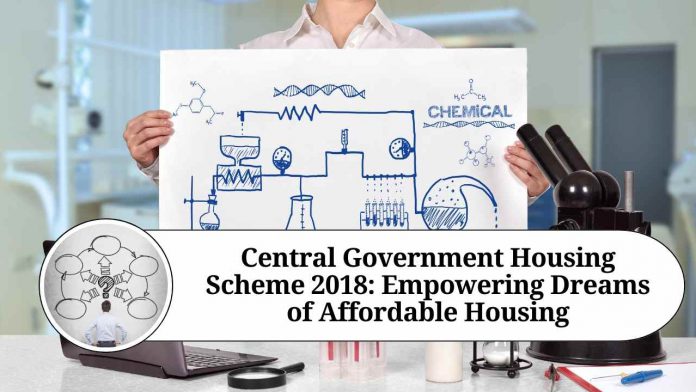Introduction
Access to affordable housing is a fundamental right and a key driver of social and economic development. Recognizing the importance of addressing the housing needs of the citizens, the Government of India launched the Central Government Housing Scheme in 2018. This landmark initiative aimed to provide affordable housing options to individuals from various socio-economic backgrounds. In this blog post, we will explore the key features, benefits, and impact of the Central Government Housing Scheme 2018.
Key Features of the Scheme
- Pradhan Mantri Awas Yojana (PMAY): The Central Government Housing Scheme was an integral part of the Pradhan Mantri Awas Yojana (PMAY), which aimed to provide affordable housing to urban and rural areas of India. PMAY was implemented in two components: Pradhan Mantri Awas Yojana-Urban (PMAY-U) and Pradhan Mantri Awas Yojana-Gramin (PMAY-G).
- Credit-Linked Subsidy Scheme (CLSS): Under the scheme, eligible beneficiaries were provided with interest subsidies on home loans. The CLSS was designed to benefit different income groups, including Economically Weaker Sections (EWS), Lower Income Groups (LIG), and Middle Income Groups (MIG-I and MIG-II).
- Enhanced Focus on Women and Minority Empowerment: The Central Government Housing Scheme aimed to empower women and minority communities by ensuring that they have equal access to affordable housing. Special provisions were made to prioritize the allotment of houses to female heads of households and individuals from minority communities.
- Urban and Rural Coverage: The scheme catered to the housing needs of both urban and rural areas. In urban areas, it focused on slum rehabilitation, affordable housing for the economically weaker sections, and affordable housing in partnership with private and public entities. In rural areas, it aimed to provide pucca houses to those living in kutcha houses.
Benefits and Impact
- Affordable Housing for All: The Central Government Housing Scheme played a pivotal role in making housing affordable for individuals from economically weaker sections and low-income groups. The interest subsidies provided under the CLSS reduced the burden of home loan repayments, making homeownership a reality for many who were previously unable to afford it.
- Improved Living Conditions: By addressing the housing needs of citizens, the scheme contributed to improved living conditions and quality of life. Access to safe and adequate housing positively impacted the overall well-being and health of individuals and families, especially those living in slums or inadequate housing conditions.
- Socio-economic Development: The availability of affordable housing options resulted in socio-economic development at both the individual and community levels. It created opportunities for individuals to invest in their future, save on rent, and allocate resources towards education, healthcare, and entrepreneurship.
- Employment Generation: The Central Government Housing Scheme had a positive ripple effect on various sectors, including construction, real estate, and related industries. The increased demand for affordable housing led to employment generation, thereby boosting economic growth and providing livelihood opportunities.
Conclusion
The Central Government Housing Scheme 2018, implemented under the Pradhan Mantri Awas Yojana, has been instrumental in empowering millions of Indians with access to affordable housing. By addressing the housing needs of individuals from various income groups, it has contributed to social inclusion, improved living conditions, and economic development. The scheme’s focus on women and minority empowerment further underscores the government’s commitment to ensuring equal access to affordable housing for all citizens. As the scheme continues to evolve and expand, it holds the potential to transform the lives of many more Indians, laying the foundation for a more inclusive and prosperous future.
Read more useful content:
Frequently Asked Questions (FAQs)
Q1: What is the Central Government Housing Scheme 2018?
A1: The Central Government Housing Scheme 2018 is a part of the Pradhan Mantri Awas Yojana (PMAY) launched by the Government of India. It aims to provide affordable housing options to individuals from various socio-economic backgrounds.
Q2: Who is eligible to apply for the Central Government Housing Scheme 2018?
A2: The scheme caters to different income groups, including Economically Weaker Sections (EWS), Lower Income Groups (LIG), and Middle Income Groups (MIG-I and MIG-II). Eligibility criteria vary based on income and other factors defined by the scheme.
Q3: How does the Credit-Linked Subsidy Scheme (CLSS) work?
A3: The CLSS provides interest subsidies on home loans to eligible beneficiaries. The amount of subsidy depends on the income category and the size of the loan. The subsidy directly reduces the effective interest rate on the loan, making it more affordable for borrowers.
Q4: Is the Central Government Housing Scheme applicable to both urban and rural areas?
A4: Yes, the scheme covers both urban and rural areas. In urban areas, it focuses on slum rehabilitation, affordable housing for EWS and LIG, and affordable housing in partnership with private and public entities. In rural areas, it aims to provide pucca houses to those living in kutcha houses.
Q5: How can I apply for the Central Government Housing Scheme 2018?
A5: The application process varies depending on the specific component of the scheme. Generally, interested individuals can apply through the designated online portals or visit the local housing authority or municipality for further guidance and assistance.
Q6: Are there any special provisions for women and minority communities under the scheme?
A6: Yes, the scheme emphasizes women and minority empowerment. Special provisions are made to prioritize the allotment of houses to female heads of households and individuals from minority communities, ensuring equal access to affordable housing.
Q7: Can I avail the benefits of the scheme if I already own a house?
A7: The scheme primarily targets individuals who do not own a house. However, some components of the scheme may have provisions for affordable housing improvement or extension projects for existing homeowners. Eligibility criteria will determine the applicability in such cases.
Q8: What are the benefits of the Central Government Housing Scheme 2018?
A8: The scheme provides affordable housing options, reduces the burden of home loan repayments through interest subsidies, improves living conditions, contributes to socio-economic development, and generates employment opportunities in the construction and related industries.
Q9: Is there any deadline to avail the benefits of the scheme?
A9: The scheme’s timeline and deadlines may vary based on the specific component and the region. It is advisable to check the official website or contact the local housing authority for up-to-date information regarding application timelines and deadlines.
Q10: Can I choose the location or builder for my house under the scheme?
A10: The scheme offers flexibility in choosing the location or builder for the house, especially in the components involving partnership with private entities. However, the availability of options may vary based on the specific region and scheme guidelines. It is recommended to check the specific rules and regulations applicable to your case.




















